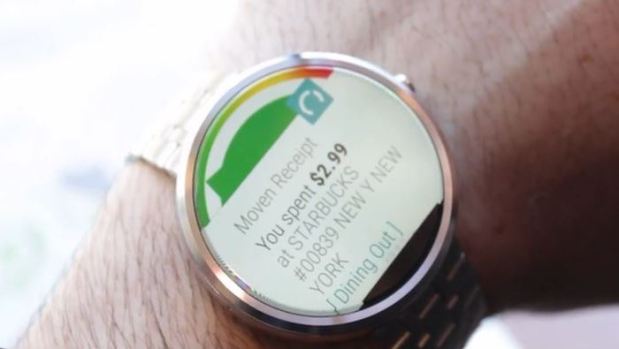Will Consumers Adopt A Digital Financial Conscience?

What’s wrong with a consumer who eats lunch out every day, prefers Starbucks to the office Keurig coffee machine and splurges on Uber instead of public transportation?
Maybe nothing. But Moven, a digital app that combines real-time spending analysis with digital banking capabilities has extended its capabilities to a new smartwatch app that will help consumers determine whether these “splurges” are interfering with their personal financial goals.
Moven’s app provides real-time analysis of users’ spending habits and financial health by displaying alerts as soon as any transaction is made. An in-app spending meter gauges month-to-month spending and compares it to the set budget, displaying on a scale of red, yellow and green.
Moven’s Founder and CEO Brett King told MPD CEO Karen Webster in an exclusive interview that the smartwatch app has been designed to take personal finance management (PFM), which until now has been limited to poorly interacting banking websites, to the next level. “So instead of having to look at graph and compare it to your budget, every day you are getting subtle feedback awareness about where your paying points are,“ he said. “That’s how PFM is going to have effect — when it’s real time, when it is contextual and when it helps people change behavior a little bit by little bit.”
The app seems to have found users across a wide spectrum, ranging from users who would have previously been classified in the “unbanked segment” to high-end consumers, he explained. However, the actual numbers are yet to come in.
“For us, it’s a learning curve. Is it more impactful to have something on your wrist, when you don’t have to pull the phone out of your pocket? We have yet to get that feedback. Is that more powerful for a behavioral change perspective? So that is what we are really interested in. I think, that’s going to take a little longer than just a couple of weeks for us to figure out,” he said.
The data from support tickets, however, has highlighted the app’s popularity among couples requesting for joint accounts that help them monitor their monthly spend on a dial on their wrists. The spending meter, much like the fuel gauge in a car, notifies when there is enough spending power or when the user is in a critical zone.
“Budgeting requires a high level of discipline, a lot of work,” he said. “We found nine out of 10 people find budgeting really hard too. This is why we designed, and it’s gone beyond PFM to a really sort of a behavioral finance model.”
The app’s experience-integrated gamification has been designed to help pinch pennies from discretionary expenses and build up on savings. The app analyzes data from spending made through Moven’s debit card.
“If we get [consumers] from using some of that discretionary fund on Starbucks or Uber or eating out and we reduce that to just a little bit each month then [they] are saving more and more,“ he explained.
Moven has partnered with New Zealand’s West Pac Bank and Canada’s Toronto Dominion Bank to provide a customized mobile app based on behavioral finance model, which encourages day-to-day interaction between the customer and bank. The partnerships, he said, have powered the growth of a phenomenal network of millions of Moven users around the world and with its current pace it will soon match up to the number of Square users.
Moven has observed customers embrace the product by taking small steps at a time. About 25 to 30 percent of the customers try the app by putting in a small amount of money, initially. It is observed that they then put a little bit more and then by 30 days, they are seen using the application regularly as their exclusive day-to-day spending account that is seen to have a growing deposit amount.
“When people are using three to four times a day that’s when they get most benefit,“ he said.
With its expanding network of banking partnerships and app users, Moven plans to leverage its wealth of behavioral data that reports information on what the consumers are spending on, the top spending categories in a demographic etcetera to develop future versions of the app.
“In [the] next release, you will start to see us using the notification layer of the operating system of Android and IOS, particularly. Impulse savings. Emergency cash facilities and things like that which are responsive to customer behavior and so forth. It’s evolving,” he said.
